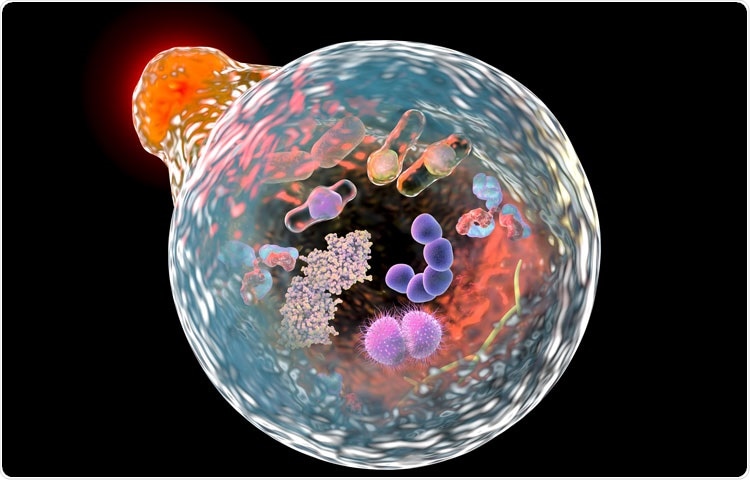Researchers from Sanford Burnham Prebys have explored the intricacies of autophagy to get a better understanding of the process. Autophagy is a process by which cells degrade and recycle cellular components. The study results have been published in the Current Biology journal.

Image Credit: Sanford Burnham Prebys
The results describe how autophagosomes—the “trash bags” in a cell—are tagged to guide their movement in the cellular “recycling plants” in which waste is processed. This latest study paves the way for understanding the link between autophagy and age-related diseases, like neurological disorders and cancer.
Our latest study identifies how a chemical modification (phosphate related tag) of a key autophagosome component, the protein called LCB3, helps direct the transport of autophagosomes within the cell in the right direction.
We previously reported that LCB3, which is found on the surface of autophagosomes, needs to be tagged for autophagy to function effectively. Now we have a better understanding of how tagging happens and how important it is for autophagosome movement.”
Malene Hansen, PhD, Study Senior Author and Professor, Sanford Burnham Prebys
Apart from their laboratory studies, the Hansen laboratory collaborated with co-workers in the lab of Sandra Encalada, Ph.D., at the Scripps Research Institute in San Diego. These colleagues are pioneers in the field of transport of cellular components in neurons. The analyses revealed that the inhibition of the chemical modification of the LC3B protein disrupts the efficient transport of autophagosomes toward the cellular recycling plants.
We clearly saw that if phosphate tagging of LC3B was hampered, autophagosomes, or the trash bags filled with waste, failed to move in the direction of lysosomes—cell’s recycling plant. This is potentially very harmful to the health of a cell. It’s somewhat analogous to what would happen if a garbage truck didn’t pick up your trash—your waste could accumulate, become scattered in the neighborhood and create a health hazard.”
Malene Hansen, PhD, Study Senior Author and Professor, Sanford Burnham Prebys
The subsequent step was to determine which waste products are chosen for recycling and how a particular cell determines when to start eliminating the waste.
My lab’s research efforts are focused on the relationship between aging and autophagy. Based on this discovery, we have a new, potential entry point to modulate the activity of recycling in a cell, which may prove relevant to understanding the diminished functions of autophagy that are known to occur in aging cells. Such insights could ultimately lead to new drug targets to combat age-related diseases as well as potential diagnostic markers to assess autophagy ‘health,’ an important goal for the future.”
Malene Hansen, PhD, Study Senior Author and Professor, Sanford Burnham Prebys
Source:
Journal reference:
Nieto-Torres, J. L., et al. (2021) LC3B phosphorylation regulates FYCO1 binding and directional transport of autophagosomes. Current Biology. doi.org/10.1016/j.cub.2021.05.052.